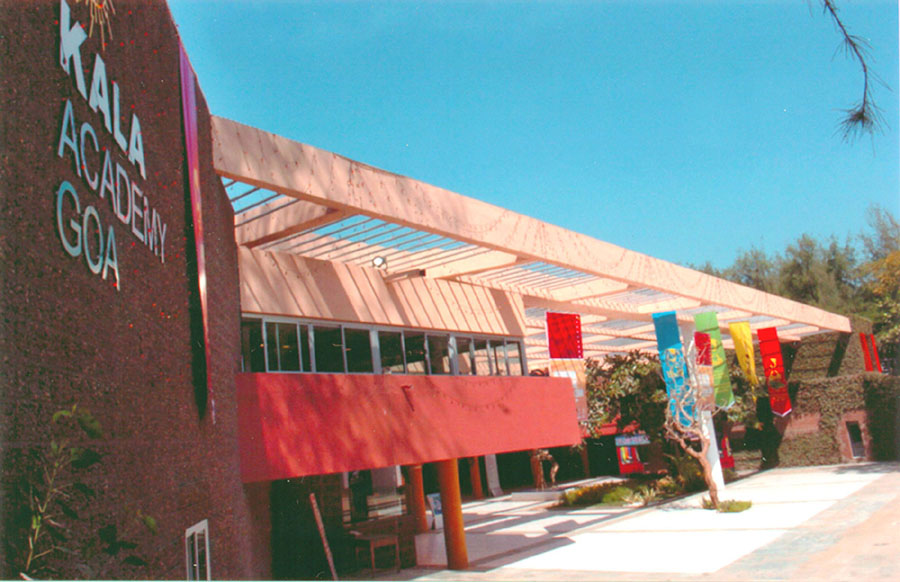The statement by Govind Gaude (Minister of Art and Culture, Goa ) about demolishing a part of Goa’s iconic Kala Academy has not only upset the Charles Correa Foundation, but also many architects across the country. Govind Gaude shared with The Navhind Times that the decision was being taken as the structure was found to have weakened with time. It is speculated that this move by the government may further translate into the demolition of the entire building.

Nondita Correa, Director- Charles Correa Foundation, shared that the government is trying to knock down a part of the building with a claim that it will be rebuilt. But, no clarity on the government’s bigger plan has been found. She also added that in the recent past, many iconic modern buildings have been demolished and such acts need to stop.
Nondita Correa also shared with Herald that the Charles Correa Foundation was not consulted by the government on this matter. She added that the foundation has an efficient knowledge pool to address the structural and design concerns related to the building.
The Goa Heritage Action Group has also strongly objected to this decision by the government. The organisation has demanded that the plans of the building be made public, and the matter be discussed in the public forum. – Source: Times of India.
Kala Academy was designed by India’s legendary architect Charles Correa in the year 1970 and is considered to be an integral part of Goa’s Modern Architectural Heritage. In addition to hosting the annual International Films Festival of India, Kala Academy, Goa also plays a vital role in providing a platform to develop dance, fine art, folk art, and literature, and thus promote cultural unity and values of Goa.
While architects, urbanists and conservationists from all around the world have been calling for protecting our tangible heritage, authorities have been quite nonchalant. The latest, which can be termed as a global tragedy happened on the 15th of April, 2019, when the wooden roof of the Notre Dame de Paris was completely destroyed by a devastating fire. While no lives were lost, the fire marked the death of a heritage that dates back almost 800 years!
The walled city of Ahmedabad stands a risk of losing its UNESCO World Heritage City status owing to rampant destruction of heritage properties. Several heritage structures that helped bag Ahmedabad this rare feat were found to be either completely demolished or compromised. – Times of India.
In February 2018, the old Kenilworth Hotel previously known as Purdy Mansion was razed to ground in order to accommodate the upcoming ‘The 42’, the tallest skyscraper of Eastern India. That the structure was specifically downgraded from Grade II to Grade III heritage by influential channels inside the government so as to obtain permissions for its demolition shows the sheer apathy of those in power towards heritage conservation. – Times of India.
In the year 2017, the symbol of modern heritage, Hall of Nations building was also demolished by the government of India to make way for the state-of-the-art modern complex at Pragati Maidan. The step was taken even after the protests and objections by a large number of architects from across the world.






